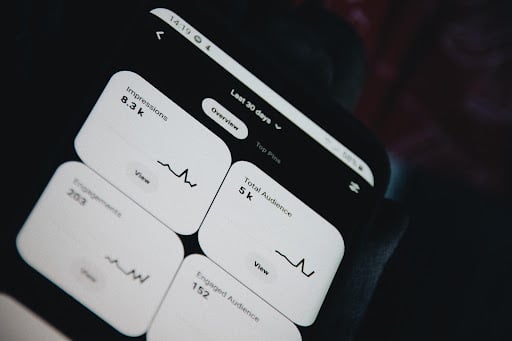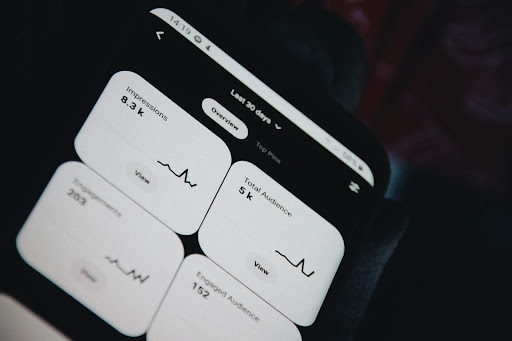In a time when our mobile devices have become as indispensable as our wallets or keys, ensuring their security is of utmost importance. These devices store our personal, financial, and professional data and act as portals to our digital personas. This article delves into the significance, advantages, and potential risks associated with mobile security.
What is Mobile Security?
Mobile security is a comprehensive concept that covers the safeguarding of mobile devices, such as smartphones and tablets, as well as the data they house. It addresses a range of threats, from malicious applications and unsecured networks to the physical loss or theft of the device itself.
Why is Mobile Device Security important?
Mobile devices, ranging from smartphones to tablets, are now integral to our everyday activities. They’re not just personal gadgets, but they also play crucial roles in business, communication, and vital areas such as healthcare and banking. Their ubiquity, combined with the vast amount of data they contain, marks them as attractive targets for cyberattacks. This emphasizes the critical need for mobile device security. Furthermore, a breached device can result in monetary losses, the risk of identity fraud, and violations of personal confidentiality.

Benefits of Mobile Device Security
Personal Data Protection
One of the primary benefits of mobile security is the safeguarding of personal data. This includes photos, messages, emails, and other files. Proper security ensures these remain confidential and aren’t accessed without authorization.
Financial Safety
Our mobile devices often have banking apps, wallets, and other financial tools. Mobile security ensures that your financial data, such as credit card details and bank account numbers, remain shielded from cyber threats.
Business Data Integrity
For professionals, mobile devices might contain critical business data. Mobile security measures ensure this data isn’t tampered with, ensuring the integrity and confidentiality of business operations.
Prevention of Identity Theft
By safeguarding personal information stored on mobile devices, effective mobile security can prevent cases of identity theft where cybercriminals could impersonate you or commit fraud under your name.
Peace of Mind
Above all, knowing that your mobile device is secure provides peace of mind. This confidence allows users to utilize their devices to the fullest, without constant fear of potential breaches.
How does Mobile Device Security work?
Mobile security is an intricate fusion of hardware, software, and procedural measures designed to guard our devices. Key features of this protection arsenal include biometric authentication methods such as fingerprint scans and facial recognition, data encryption techniques to shield sensitive information, secure boot mechanisms ensuring that devices launch verified and uncompromised software, routine software patches to address vulnerabilities, and robust firewall configurations to fend off malicious intrusions. Additionally, as cyber threats evolve, the role of penetration testing becomes increasingly pivotal.
Penetration testing, or ethical hacking, involves simulating cyberattacks on devices to evaluate their security posture. By proactively identifying and rectifying vulnerabilities through such tests, mobile security strategies become more robust and adaptive to emerging threats. This holistic approach ensures that our mobile devices are not just reactive but are equipped to anticipate and counteract a wide spectrum of cyber threats.

Threats to Mobile Security
Physical Threats
Two primary physical vulnerabilities plague mobile devices: the risk of data loss and the threat of theft. While natural disasters can result in data loss, they don’t typically result in data theft. Recovering lost data might be feasible, but for businesses, data theft can prove costly. To mitigate unauthorized access following theft, mobile devices come equipped with lock screens. However, it’s vital that this security mechanism is robust enough to deter attackers from sidestepping it, possibly by extracting data directly from the device’s storage.
In the event of theft, a mobile device should allow only a limited number of PIN entry attempts before locking out access to its main interface. Such a security measure is designed to thwart brute-force attempts to crack the home screen PIN. For gadgets storing sensitive information, organizations ought to consider employing software that automatically erases all content after a specified number of unsuccessful login tries. Utilizing encrypted storage ensures that attackers cannot bypass PIN security to directly extract data.
Application Threats
While administrators have the capability to restrict application installations on desktops, mobile device users generally have the freedom to install any app they choose. This liberty to install third-party applications can pose multiple security threats to mobile devices. To address this, companies should establish clear policies about mobile device usage, highlighting the risks of downloading and installing non-sanctioned third-party apps.
Even though users should ideally avoid jailbreaking or rooting their phones, some still proceed, thereby disabling many inherent security features of the operating system. Applications, particularly third-party ones, operating on such modified devices can inadvertently expose data to attackers through various exploit techniques. Additionally, these third-party apps might conceal malicious software or keyloggers within their programming. While the installation of anti-malware software is a recommended defense measure, rooted devices can still compromise these protective tools, making them susceptible to malware interference.
Network Threats
Mobile devices, particularly those operating under bring-your-own-device (BYOD) policies, introduce potential risks to internal networks. It’s not rare for malware on these devices to scan and identify open storage areas or susceptible resources within the network, allowing it to deploy harmful files and exploit them. Such actions can occur unnoticed on mobile devices that lack sufficient security measures.
While administrators might mandate BYOD users to install antimalware solutions, there’s no guarantee that such software remains current and updated. Moreover, when a company offers public Wi-Fi for both customers and employees, it introduces an added dimension of vulnerability. Staff members using these public networks to send and receive data in such unrestricted settings make the network susceptible to dangers, such as man-in-the-middle (MitM) attacks. Such vulnerabilities might enable attackers to intercept and steal vital login credentials, increasing the chances of unauthorized account access.
Web-Based and Endpoint Threats
Mobile applications interface with data and internal systems through endpoints. These endpoints not only process data but also relay responses back to the mobile device. However, these endpoints, coupled with any associated web-based applications, introduce potential risks to an organization. It’s imperative for these endpoints to be meticulously coded with appropriate authentication measures to deter cyber attackers. If these endpoints are inadequately secured, they could become prime targets for malicious actors looking to infiltrate the system and extract valuable data.
Given the surge in mobile device usage, some cyberattacks are specifically tailored to target these users. Malevolent actors craft deceptive websites that closely resemble legitimate ones, baiting users into submitting confidential information or downloading harmful apps. It’s not a rarity for a user to be misled into believing that a certain app download is mandatory to access a video or another media resource. Unbeknownst to them, these apps could be malicious tools designed to scan the device for weak points and expose sensitive information.
Components of Mobile Security
Mobile security is a blend of several components:
- Device protection: Including screen locks and data encryption.
- App management: Ensuring apps are updated and come from trusted sources.
- Network security: Using VPNs and encrypted networks to ensure safe communication.
- Behavioral monitoring: Identifying and acting upon unusual device behavior that might indicate a security breach.
The world today is unimaginably interconnected, largely due to the ubiquitous nature of mobile devices. These devices are no longer mere communication tools; they serve as repositories of our personal, financial, and professional data. With the immense potential they offer, comes an equal magnitude of risks. As explored in this piece, the spectrum of threats ranges from physical theft to sophisticated app-based and network-centric cyberattacks. However, with vigilant mobile security measures in place, the rewards can be reaped safely. From personal data protection to ensuring business data integrity, the benefits of mobile security are manifold.
The critical importance of mobile security cannot be overstated. As technological advancements persist, the complexity and scope of threats will likewise expand. This necessitates that both individuals and organizations remain vigilant, embrace best practices, and give top priority to mobile device security. The goal extends beyond merely guarding against existing threats; it encompasses forecasting and ready for upcoming challenges. In the continuous tug-of-war between cyber threats and security, staying proactive and well-informed remains our strongest shield.
You may be interested in: Cloud Security for the Modern Business






